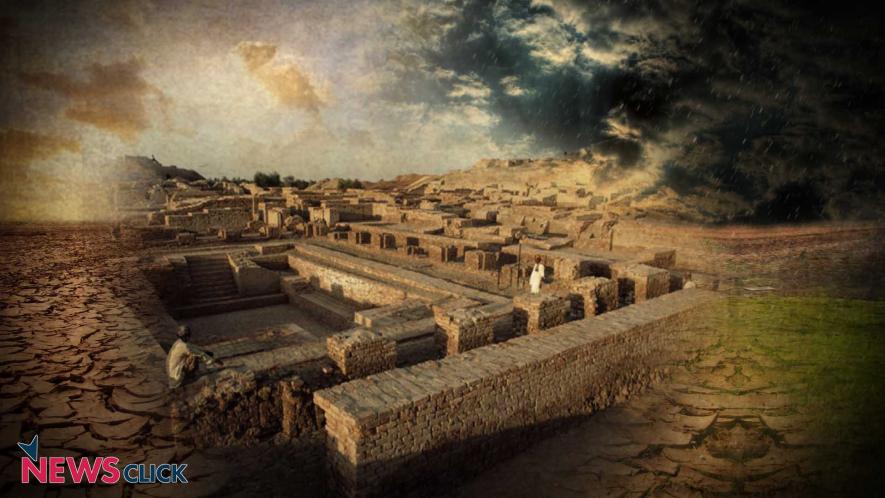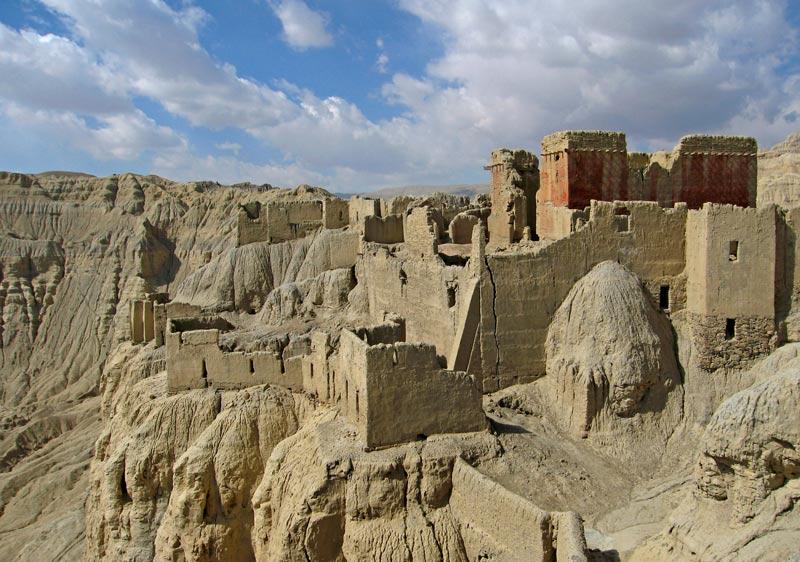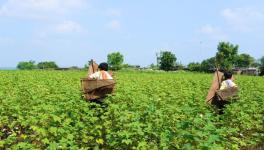Rise and Fall of Indus Valley Civilisation Happened Due to Changes in Indian Monsoon

Newsclick Image by Sumit Kumar
More than invasions and wars, strength of the Indian Monsoon determined the fate of ancient Indian civilisations and kingdoms. A new research article published in Science Advances earlier this month examines how sociopolitical changes in the Indus and Vedic civilisations were impacted by variations in the Indian Summer Monsoon (ISM). Led by Gayatri Kathayat, a post-doctoral scholar at the Institute of Global Environmental Change, Xi’an Jiaotong University, China, the team of researchers constructed precisely dated climate records going back 5,700 years to make these correlations.
The study shows how during the decline of the Indus Valley Civilisation around 3,500 years ago, the monsoon was weak. This was due to temperatures in the Northern Hemisphere being low, which also led to a decrease in water flow in rivers as the Himalayan glaciers melted slowly. These factors together led to a Deurbanization phase, as people relying on agriculture would have found their livelihoods endangered.
“This is important in the light of global warming, rising ocean temperatures and the fluctuation in the monsoon India has seen in the last 10-15 years, especially if you consider that civilisation is now spread across the region where the Indus Valley civilisation flourished as well as in regions to the east of that area”, said Ashish Sinha, co-author of the study and professor of earth sciences at California State University in US. “On the one hand, you have the established cyclical pattern of the monsoon and on the other hand, you have all these other climatic changes that are expressing. What would be the outcome of superimposing the data set representing the cyclical pattern of the Indian summer monsoon with the data set expressing the influence of recent climatic changes? This is something to study deeply and possibly to use as a base for agricultural policy. India is, after all, still an agrarian economy.”
The rise of the civilisation, and its transformation from an agrarian-based community into large urban centres was also marked by a change in monsoon. These civilisation phases, called the Early and Mature phases, coincided with a wet, warm, and climactically stable period. The Mature phase, which was the peak of the Indus Valley Civilisation and saw the development of urban centres, came during a sudden intensification of the monsoon. This happened about 4,550 years before present (BP). Thus, the boom in the civilisation was due to good rains leading to successful crop cycles.
According to this study, the Indian Summer Monsoon undergoes cyclical changes, caused by changes in temperatures in the Northern Hemisphere. These phases can stretch for decades, or even centuries. Rise and decline of the Indus Valley Civilisation correspond to these changes in the monsoon. As temperatures in Northern Hemisphere increase, the monsoon becomes stronger and longer. The vice versa is also true.
The climate records were constructed studying cave formations, called speleothems, in the Sahiya Cave in Uttarakhand. Gayatri is quoted in an interview saying that this cave was chosen due to its strategic location on the fringes of the region impacted by Indian Summer Monsoon. Being on the fringes means that this cave will be sensitive to monsoon changes, and its mineral deposits will be impacted by these changes. “We studied the changes in the chemistry of speleothems (technically, the ratio of heavy to light isotopes of oxygen) to determine how their growth has been impacted by variations in the monsoon rainfall. This is what makes us confident of the Indian summer monsoon precipitation record of the last 5,700 years based on the speleothems of the Sahiya Cave,” Gayatri said.
The Indus Valley Civilisation was not the only one impacted by climate changes. The rise and fall of the Vedic civilisation also coincides with changes in ISM. After the decline of Indus Valley, the Vedic period began around 3,400 years ago. This period, known as the Early Vedic period, occurred during stable temperatures in the Northern Hemisphere and a stronger ISM. The societies around this time were tribal or pastoral, and later transitioned into settled agrarian communities during a phase of intensification of the monsoon. This was also when Vedic texts, central to Hindu culture, were written. The end of the Vedic period again coincided with an abrupt weakening of the monsoon.
Changes in the kingdoms that came after the Vedic period also correspond to monsoon changes. The Mauryan empire flourished during a period of strong monsoon, and its collapse happened during a weak ISM period.
Beyond India, the Tibetan Guge Kingdom was also affected by monsoonal variations. The Indian Summer Monsoon leads to rainfall in India, as well as parts of Tibet and Pakistan. Thus, changes in ISM impact cultures of these regions as well. Reasons for the collapse of the Guge Kingdom are heavily debated, with theories favouring military invasions. But this research shows that the period of the sudden decline of Guge happened during the most severe dry period seen in Sahiya cave records.

Ruins of the Guge Kingdom.
This research paper further weakens the “Aryan Invasion” explanation of the fall of the Indus Valley Civilisation. Other climate change studies in the past have also challenged the invasion theory. The research also questions the 4.2 ka climate event said to be behind the fall of the Old Kingdom in Egypt and the Akkadian Empire in Mesopotamia. This climate event saw a severe drought and could have lasted all of 22nd century BC. But its impact on Indus Valley did not reflect too strongly in the Sahiya cave records, thus its impact on deurbanization of the civilisation was limited.
The researchers conclude that while these broad climate changes had a significant impact on changes in civilisations and kingdoms, other local factors must also have contributed. A more extensive assessment of regional climate data is required for proper evaluation of the climate-culture link.
Get the latest reports & analysis with people's perspective on Protests, movements & deep analytical videos, discussions of the current affairs in your Telegram app. Subscribe to NewsClick's Telegram channel & get Real-Time updates on stories, as they get published on our website.
























